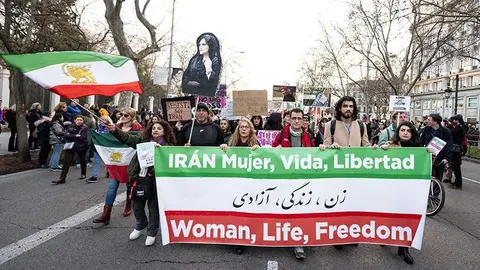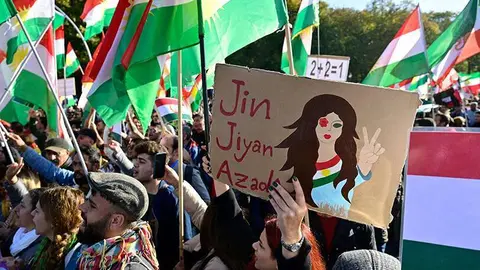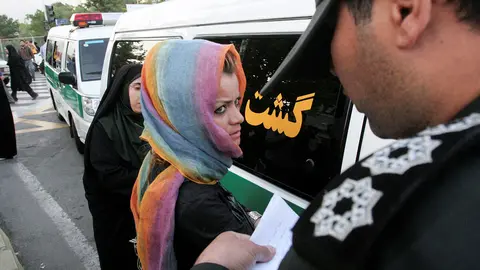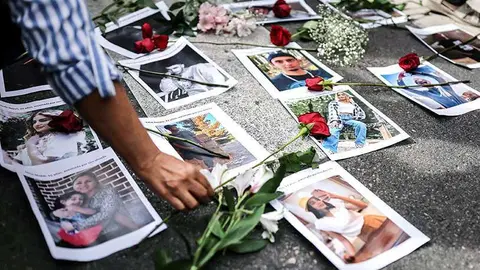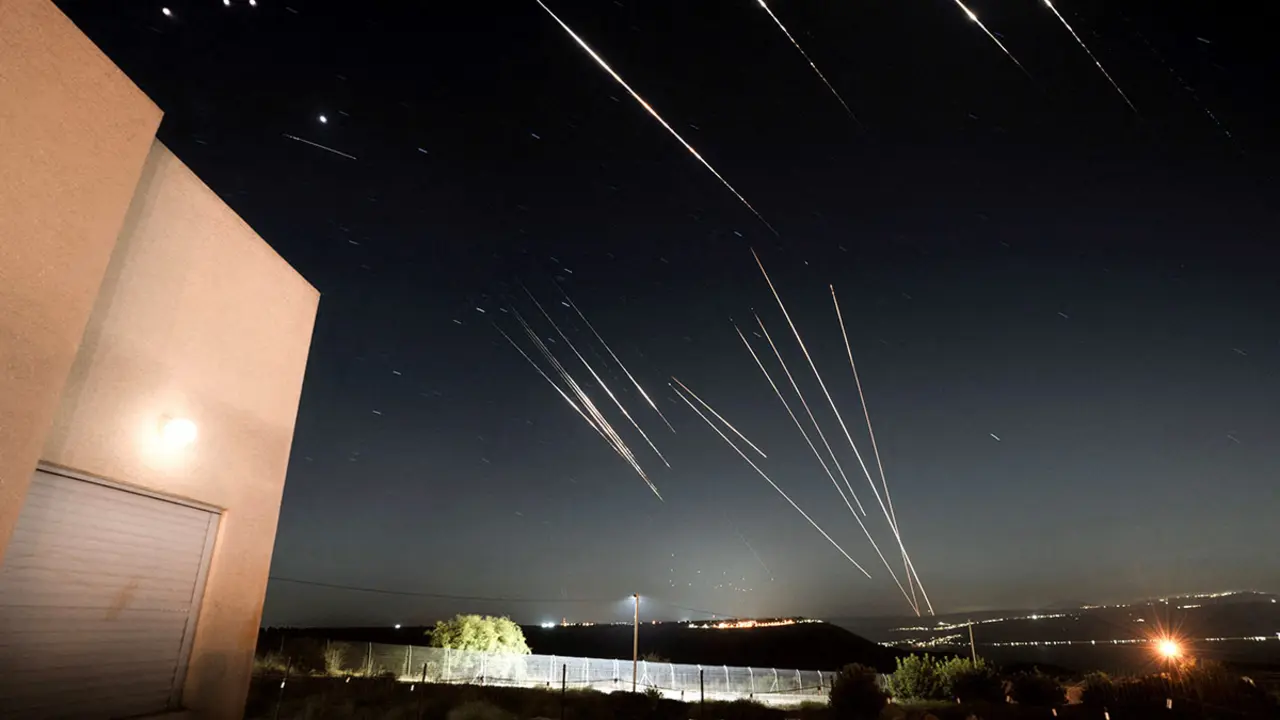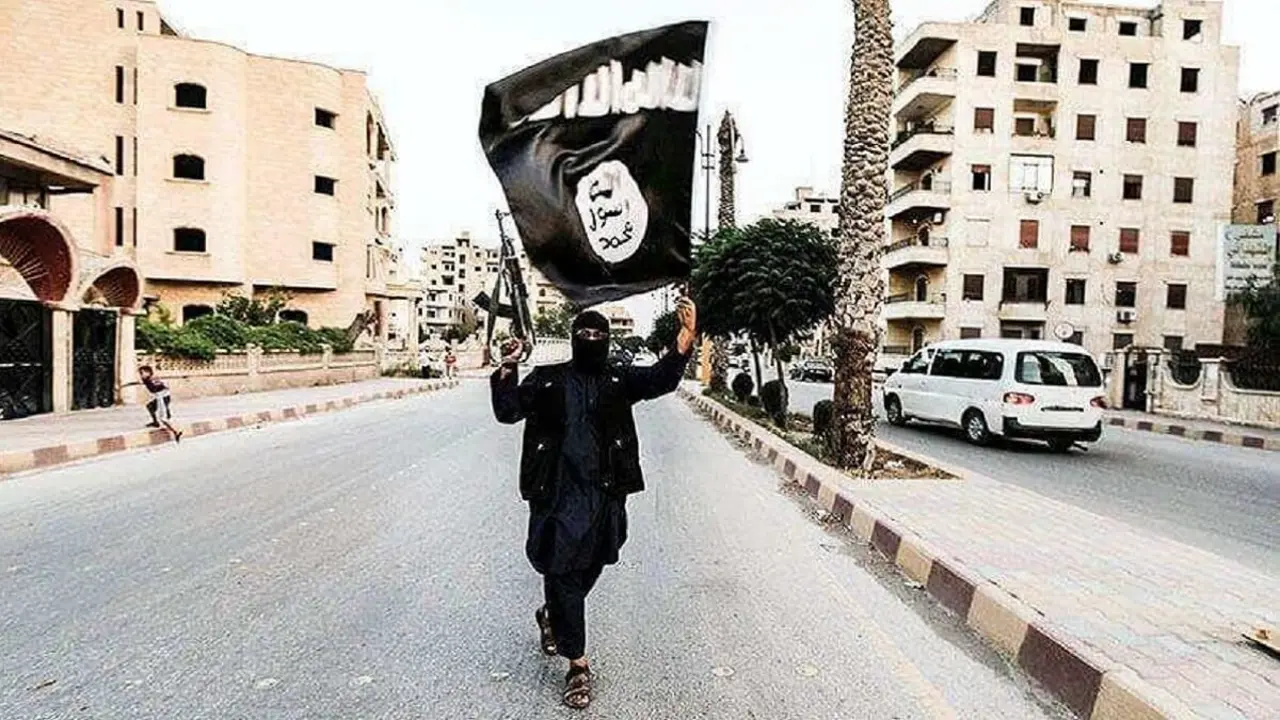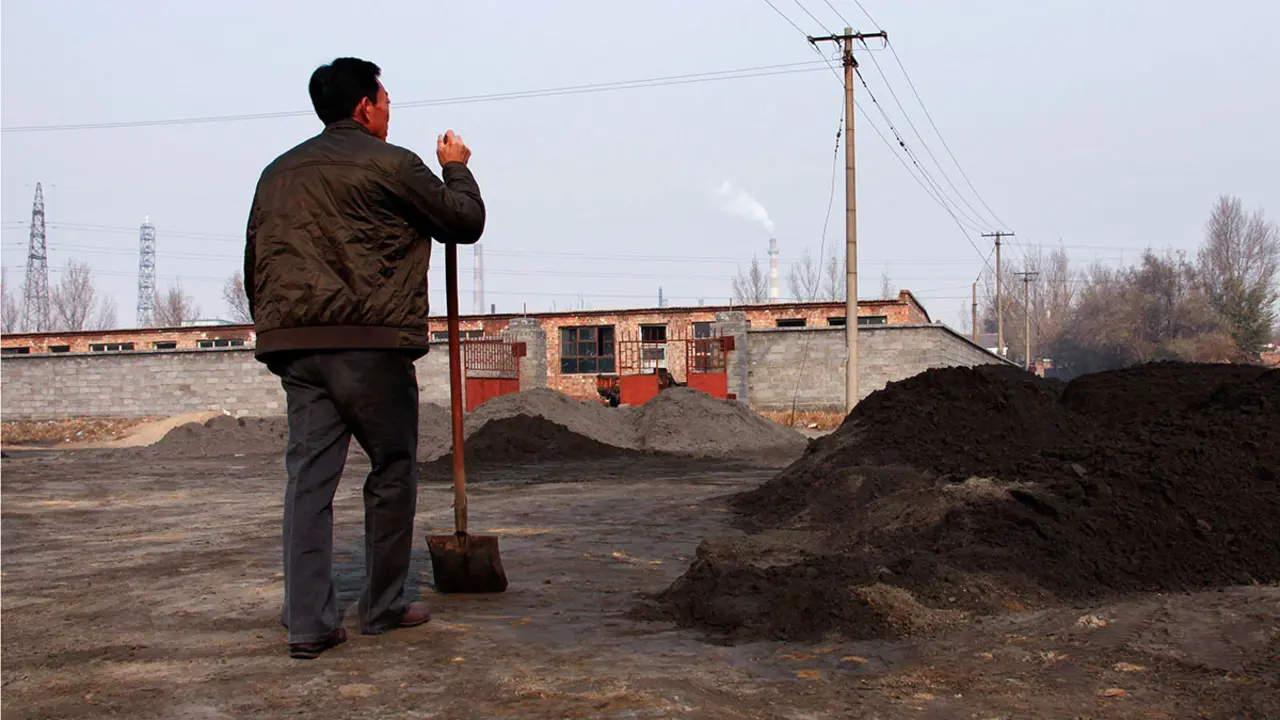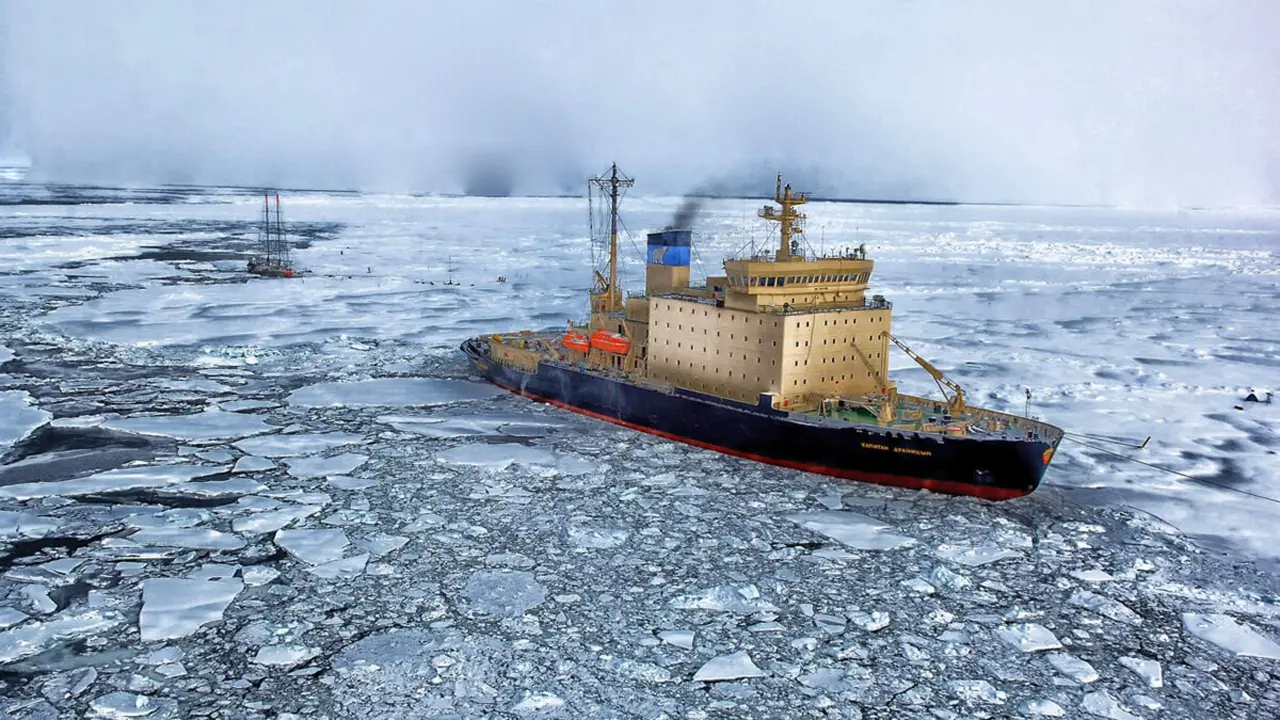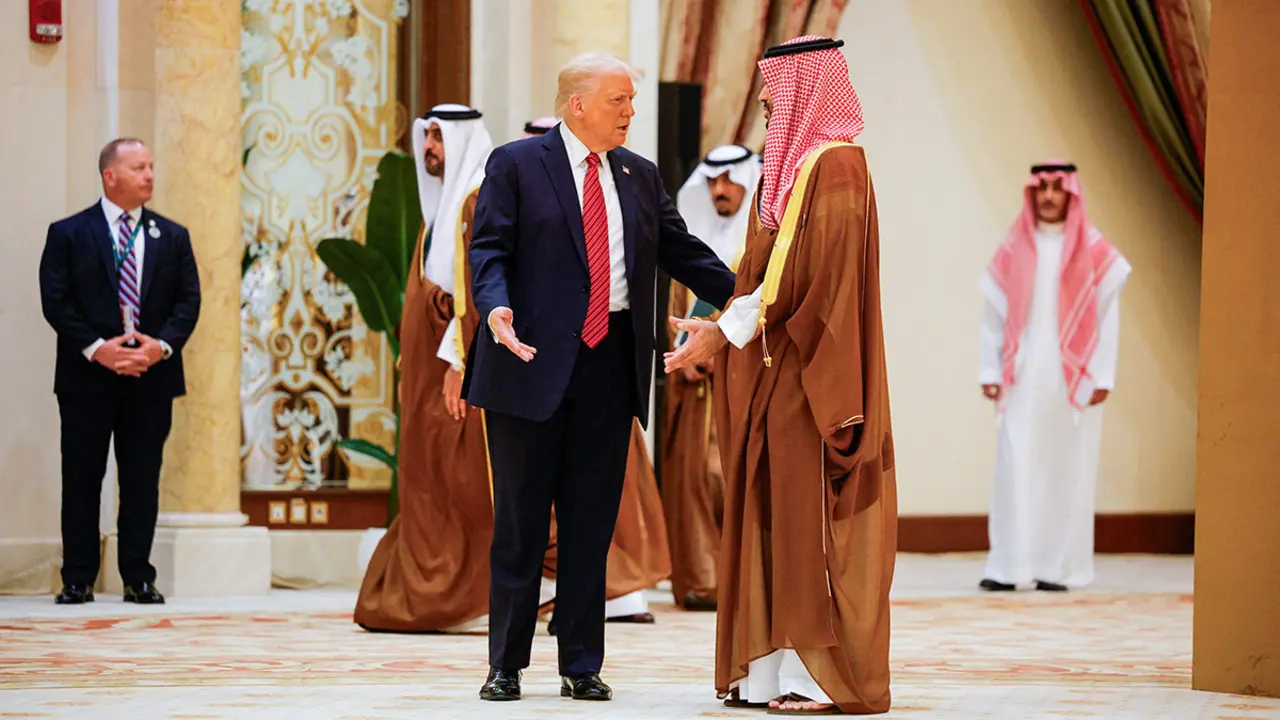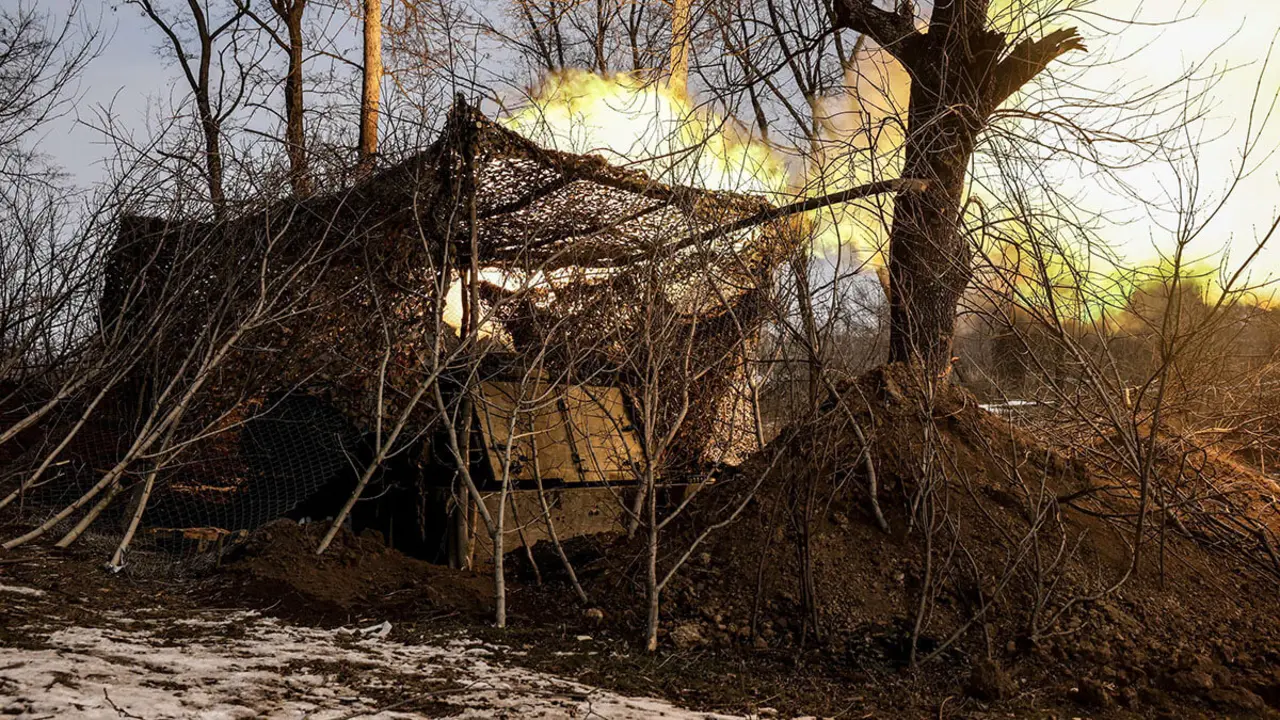One year after the assassination of Mahsa Amini, the fuse of revolution in Iran

Tehran has stepped up repression in recent weeks in the run-up to the anniversary of Amini's death.
September 16 is a key date for Iranians, both for those living in the country and those in the diaspora. The day will be marked by mass protests on the first anniversary of the death of Mahsa Amini, a young Kurdish woman killed by the Iranian Morality Police for wearing the Islamic headscarf, which has been compulsory for all women since the triumph of the Islamic Revolution in 1979.
However, this date also represents the beginning of a series of mass demonstrations against the repression of the Iranian regime which, for the first time, have been led by women. The death of Amini and the compulsory wearing of the hijab were the trigger for these protests - which have even been considered a real revolution - but they are not the only causes of the great discontent in Iranian society. There are too many reasons that have led citizens to take to the streets, including clashes with security forces and the burning of government buildings.

Repression, violence, corruption, economic crisis, lack of prospects and inequality are just some of the causes of these protests which, despite the lack of media coverage, continue in various parts of the country despite the high number of people killed and detained by the authorities.
The revolution in Iran has also crossed borders and the 22-year-old Amini has become a symbol of freedom around the world, as has the slogan 'Woman, life, freedom', which has resonated in every corner of the globe. On the occasion of the first anniversary of Amini's death and the start of the protests, demonstrations are expected in several cities around the world, as well as inside Iran.
However, as Iranians at home and abroad prepare for the anniversary, the authorities are also stepping up repression in the run-up to 16 September. According to activists and human rights organisations, Tehran has in recent weeks arrested activists, relatives of those arrested and killed, and influential critics of the regime, such as singer Mehdi Yarahi, who was arrested after he released a song encouraging women to remove their veils in defiance of strict dress laws.
El cantante #MehdiYarahi fue detenido por orden del fiscal de Teherán. Una vez más y contra sus propias leyes publican imágenes de su detención.
— Ryma Sheermohammadi (@Rsheermohammadi) August 29, 2023
Tras el lanzamiento de su canción “Tu pañuelo” en apoyo al movimiento de #MujerVidaLibertad Mehdi deja su huella una vez más para la… pic.twitter.com/2y2j4HUcyg
An uncle of Mahsa Amini has also been arrested after security forces entered his home, searched his house and car - without a warrant - and confiscated some of his documents such as his passport. Relatives have pointed out that before his arrest, Safa Aeli - Amini's uncle - was chased by security forces for a week and his whereabouts are currently unknown.
Relatives of other detainees and those killed have also been subjected to pressure and "arbitrary arrests and detentions" by the authorities in an attempt to silence them, according to Amnesty International, which also denounces "abusive interrogations and unfair sentencing" in an attempt to cover up crimes committed by the security forces themselves. This is the case, for example, of three relatives - including the mother - of Hananeh Kia, a girl in her 20s who was killed in September 2022, during the initial phase of the protests. "The cruelty of the Iranian authorities knows no bounds," says Diana Eltahawy, deputy regional director for the Middle East and North Africa.

According to data from the Centre for Human Rights in Iran (CHRI), in just eight days, 21 relatives of victims were summoned to court or arrested, including Mashallah Karami, the father of Mohammad Mehdi Karami, who was hanged in January. There have also been reports of arrests in the Kurdish-populated areas of western Iran, where Amini came from and where the first protests and strikes took place. Hengaw, a Kurdish organisation based outside Iran, reported that Saro Mostajer, brother of one of its board members, Jila Mostajer, had been arrested in Amini's hometown of Saqez and taken to an unknown location.
Despite the passage of 16 days, #MashallahKarami, the father of Mohammad Mehdi Karami, is still in prison. Informed sources say that the Karami family has been under severe pressure and threats not to inform about Mashallah Karami's condition.
— ali_naseri (@alireigns1011) September 7, 2023
Be his voice
His life is in… pic.twitter.com/ea9kyCYGzp
According to Roya Boroumand, executive director of the Abdorrahman Boroumand Centre, quoted by AFP, "the families of the victims have been attacked quite systematically". "They have been repeatedly arrested, summoned and interrogated, or their houses have been raided," explained Boroumand, who also added that relatives have been pressured not to post anything on social media, and not to attend protests or commemorations. As Boroumand points out, this "coordinated" crackdown is aimed at "preventing the dissemination of news, videos and images of victims, commemorations and other gatherings and preventing renewed public mobilisation inside and outside Iran".
On the other hand, Hadi Ghaemi, director of CHRI, warned the news agency that the "silence of the international community" in the face of these crimes and the heavy repression risks giving "a green light to the state security apparatus to further muzzle civil society".

Fear and violence, the two elements on which the regime relies to dissuade protests
The Islamic Republic's authorities are aware that the day of 16 September will be marked by protests and demonstrations of rejection of the regime, so the security forces have stepped up repression to avoid a repeat of last year's situation.
"All those who have been arrested in the past have been asked to go to police stations, where they are warned that if they take part in the protests again they will face reprisals," Iranian activist Nilufar Saberi told Atalayar. "In fact, they are forced to sign a document in which they agree not to participate in the demonstrations", Saberi adds, recalling that these "commitments and declarations" are obtained through distortion and threats.
In order to silence all criticism before the anniversary, in addition to harassing relatives of victims and detainees, the authorities have also arrested eleven women's rights activists in Gilan province, one of the areas where most protests took place last year, the Human Rights Activists News Agency (HRANA) reported at the end of August.

The regime uses fear and violence to try to instil fear among citizens and try to deter protests. According to Iran Human Rights, 486 people have been executed this year in an attempt to "create fear in society and prevent further protests".
However, this has been Iran's approach all year. Only a few months ago, the authorities announced the return of the dreaded Morality Police, a body that had scaled back its activity in order to calm protests and under pressure from the international community. The return of these patrols, which were responsible for the death of Mahsa Amini, is also accompanied by surveillance cameras that can even identify women in their cars.

On the other hand, Ryma Sheermohammadi, a Spanish-Iranian activist and translator, highlights to Atalayar other methods used to harass women that have been used in the wake of the protests. "We should not forget that there were people in the subways and buses taking pictures of women", she stresses. In this sense, the activist points out that the repression promoted by Tehran, including the return of the Morality Police, is also "the regime's response to a part of Iranian society that demands that they comply with the laws of Islam".

Sheermohammadi also recalls a government-led campaign to send messages to all citizens - including men - warning that if they do not comply with the law they will be brought to justice.
During this year of protests led by women and backed by many men, there have also been gas attacks on girls' schools in various parts of the country with the aim of poisoning them.
However, despite all this violence against women, many continue to defy the regime and the strict misogynistic dress laws. "The aesthetics of the streets in all the country's cities have changed and Iranian women not only no longer wear the veil, but many of them wear light clothing," says Sheermohammadi.

Persecution of religious minorities
In addition to the harassment of relatives of victims and detainees, the regime has also intensified its repression of the Baha'i community this summer. Last July alone, a Revolutionary Court in Tehran sentenced four members of Iran's Baha'i community to a total of 20 years in prison. Among those arrested is Shadi Shahidzadeh, whose crime was attempting to bury his grandmother.
Shahidzadeh's case highlights not only the persecution of religious minorities - in this case the Baha'i community - but also the cruelty of a regime that does not even respect the dead. As the well-known Iranian activist Narges Mohammadi points out, the Islamic Republic has extended its repression to cemeteries and funerals.
The fate of 4 #Bahai citizens is unknown. Shadi Shahidzadeh, Mansur Amini, Valiollah Ghodamian and Ataollah Zafar, who were arrested 10 days ago in Tehran, have been kept since their arrest without any trial in Ward 209 of Evin Prison. #StopHatePropaganda pic.twitter.com/cTY0MMiORG
— ARAM Iran (@ARAMalliance) May 15, 2023
Shahidzadeh, the mother of a five-year-old girl, tried to bury her grandmother in a plot of land that belonged to the Baha'i community before the Islamic Revolution. However, when the Ayatollahs came to power, the land came under the control of Tehran, which is building the Khavaran Cultural Centre on the Baha'i graves. The members of this community are given an area by the Islamic authorities to bury their dead called 'Kofrabad' (land of sinners), which is located next to the mass graves of the victims of the mass executions of the 1980s in Iran.
Faced with this unjust situation, the Baha'is resist and try to honour their dead by burying them in the same land that was allocated to them in the past. But in Iran, defying the authorities is not allowed. Shahidzadeh visited all relevant government agencies to obtain permission for the burial. In the end, her grandmother was buried without informing the family and Shahidzadeh herself was placed in solitary confinement.
#Shadishahidzadeh was arrested on her way to bury her grandmother, after 48 days of solitary confinement we saw her on June 16th as she entered the women's ward in Evin prison. She is 39 years old and her 5 years old daughter is waiting for her mother. pic.twitter.com/JkZWw4IT7k
— Narges Mohamadi (@freenargesmhmd) September 5, 2023
US returns millions of dollars to regime in exchange for prisoner exchange
In the midst of this dramatic situation, with the anniversary of Mahsa Amini's death and the start of protests just around the corner, the US struck a controversial deal last August with Iran, releasing Iranian assets worth $6 billion in exchange for a prisoner swap between the two countries.
According to Secretary of State Antony Blinken, these funds held in South Korea will be transferred "to restricted accounts so that the money can only be used for humanitarian purposes". For their part, the Iranian authorities have assured that these "illegally seized" billions of dollars will be used for "the various needs of the country, as determined by the competent authorities".

One of the US's main allies in the region, Israel, has condemned the deal, claiming that it will serve to "provide funding to Tehran-sponsored terrorist elements".
Equally, many analysts and activists fear that these funds will serve to further finance the state's violent machine. "This money is being used for two things: repressing the Iranian people and expanding Islamism," says Saberi, who recalls that the US has made deals with the Islamist theocracy in the past.

"We start from the premise that the Islamists have been in power in Iran since 1979 because they reached agreements with the powers, specifically with the United States, which was interested in stopping the advance of communism in Iran", she adds.
The agreement - according to many Iranians - also shows that there is no interest on the part of the international community, particularly the West, in Iran becoming a democratic and free country. "There is not a single government in the world that has an interest in the Islamists leaving Iran. First, because they are giving away Iran's natural resources on the cheap, and second, because it is a weak government that its own people not only do not support, but detest," she concludes.

